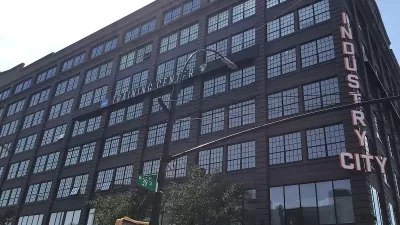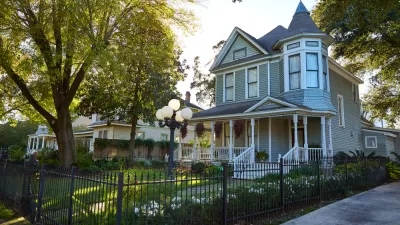For other cities struggling with sky-high real estate prices, Colorado’s resort town offers some instructive lessons on what’s working — and what isn’t.

The first time Jenny Stuber ever visited Aspen, it was on rock legend John Denver’s private jet, called the “Windstar.” She had been living with her mother, on welfare and eligible for free-and-reduced lunch at school. But when her father moved to Aspen in 1976, she began to visit him in the summers. Aspen introduced her to a new world — one of extreme contradictions. Whereas many locals, like her father, were able to get by on middle-class salaries and lived in affordable homes, others spent $2 million on second, third, or even fourth homes. This experience, in part, inspired her to become a sociologist, and to turn her lens on questions of social class and how it’s formed.
In her new book, “Aspen and the American Dream: How One Town Manages Inequality in the Era of Supergentrification,” Stuber, an associate professor of sociology at the University of North Florida, explores how the Aspen of her childhood has shifted in an era of “supergentrification.” While the city has managed to maintain a working middle class, thanks in large part to an affordable housing program established in the 1970s, progressive political leadership and creative urban planning, moneyed interests threaten to tip the scales in favor of high-end development. In 2016, the City Council announced a complete moratorium on development. Over 10 months, it rewrote the land-use code to favor residents over developers.
Stuber spoke with Next City about her book, what supergentrification looks like on the ground, and what other cities and communities can learn from places like Aspen. This interview has been lightly edited.
FULL STORY: Can Cities Be Saved From ‘Supergentrification’? Aspen May Offer a Roadmap

Alabama: Trump Terminates Settlements for Black Communities Harmed By Raw Sewage
Trump deemed the landmark civil rights agreement “illegal DEI and environmental justice policy.”

Planetizen Federal Action Tracker
A weekly monitor of how Trump’s orders and actions are impacting planners and planning in America.

The 120 Year Old Tiny Home Villages That Sheltered San Francisco’s Earthquake Refugees
More than a century ago, San Francisco mobilized to house thousands of residents displaced by the 1906 earthquake. Could their strategy offer a model for the present?

In Both Crashes and Crime, Public Transportation is Far Safer than Driving
Contrary to popular assumptions, public transportation has far lower crash and crime rates than automobile travel. For safer communities, improve and encourage transit travel.

Report: Zoning Reforms Should Complement Nashville’s Ambitious Transit Plan
Without reform, restrictive zoning codes will limit the impact of the city’s planned transit expansion and could exclude some of the residents who depend on transit the most.

Judge Orders Release of Frozen IRA, IIJA Funding
The decision is a victory for environmental groups who charged that freezing funds for critical infrastructure and disaster response programs caused “real and irreparable harm” to communities.
Urban Design for Planners 1: Software Tools
This six-course series explores essential urban design concepts using open source software and equips planners with the tools they need to participate fully in the urban design process.
Planning for Universal Design
Learn the tools for implementing Universal Design in planning regulations.
Clanton & Associates, Inc.
Jessamine County Fiscal Court
Institute for Housing and Urban Development Studies (IHS)
City of Grandview
Harvard GSD Executive Education
Toledo-Lucas County Plan Commissions
Salt Lake City
NYU Wagner Graduate School of Public Service





























